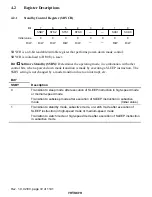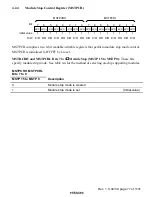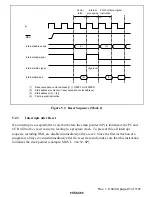
Rev. 1.0, 02/00, page 86 of 1141
4.10
Direct Transition
4.10.1
Overview of Direct Transition
There are three operating modes in which the CPU executes programs: high-speed mode,
medium-speed mode, and subactive mode. A transition between high-speed mode and subactive
mode without halting the program* is called a direct transition. A direct transition can be carried
out by setting the DTON bit in LPWRCR to 1 and executing a SLEEP instruction. After the
transition, direct transition interrupt exception handling is started.
Direct Transition from High-Speed Mode to Subactive Mode: If a SLEEP instruction is
executed in high-speed mode while the SSBY bit in SBYCR, the LSON bit and DTON bit in
LPWRCR, and the TMA3 bit in TMA (Timer A) are all set to 1, a transition is made to subactive
mode.
Direct Transition from Subactive Mode to High-Speed Mode/Medium-Speed Mode: If a
SLEEP instruction is executed in subactive mode while the SSBY bit in SBYCR is set to 1, the
LSON bit is cleared to 0 and the DTON bit is set to 1 in LPWRCR, and the TMA3 bit in TMA
(timer A) is set to 1, after the elapse of the time set in bits STS2 to STS0 in SBYCR, a transition is
made to directly to high-speed mode or medium-speed mode.
Note: *
At the time of transition from subactive mode to high- or medium-speed mode, an
oscillation stabilization wait time is generated.
















































